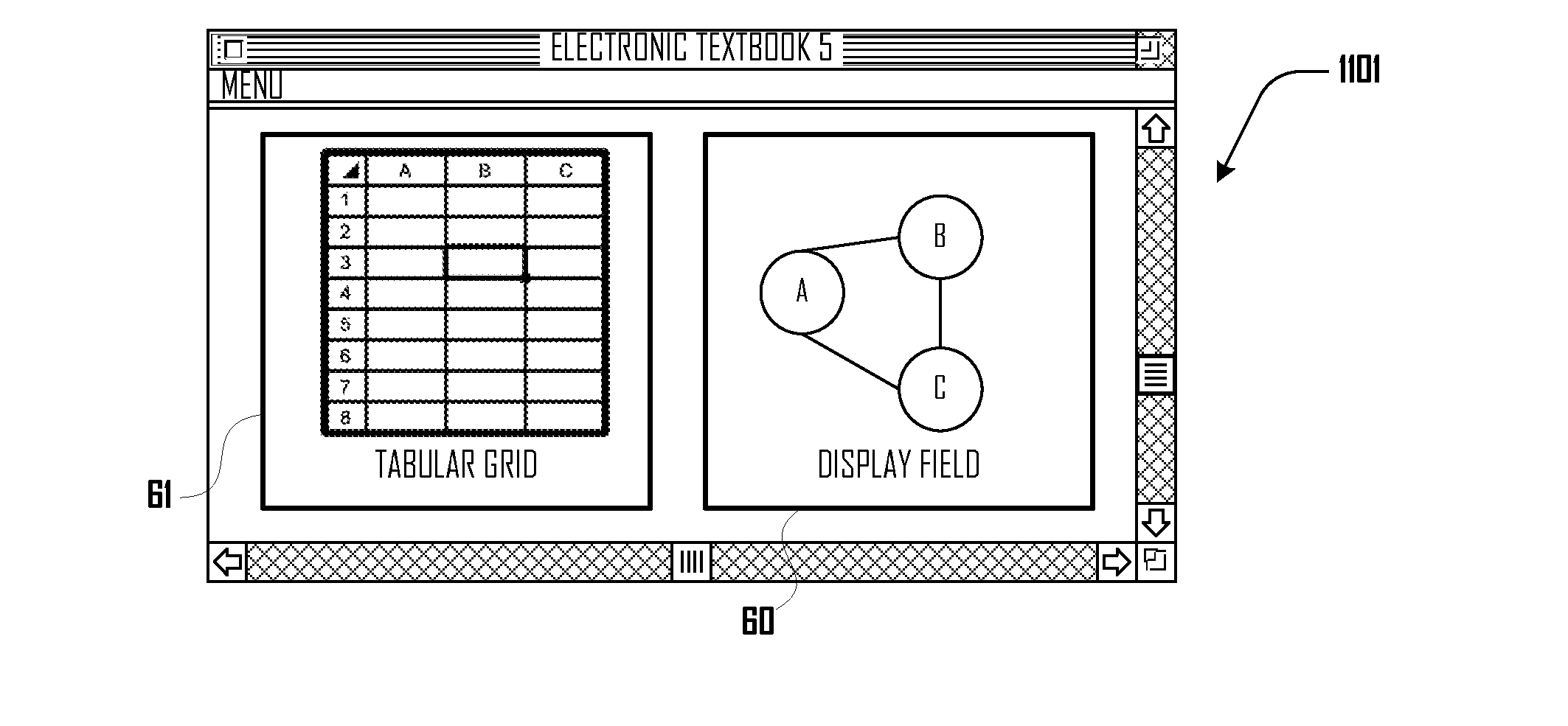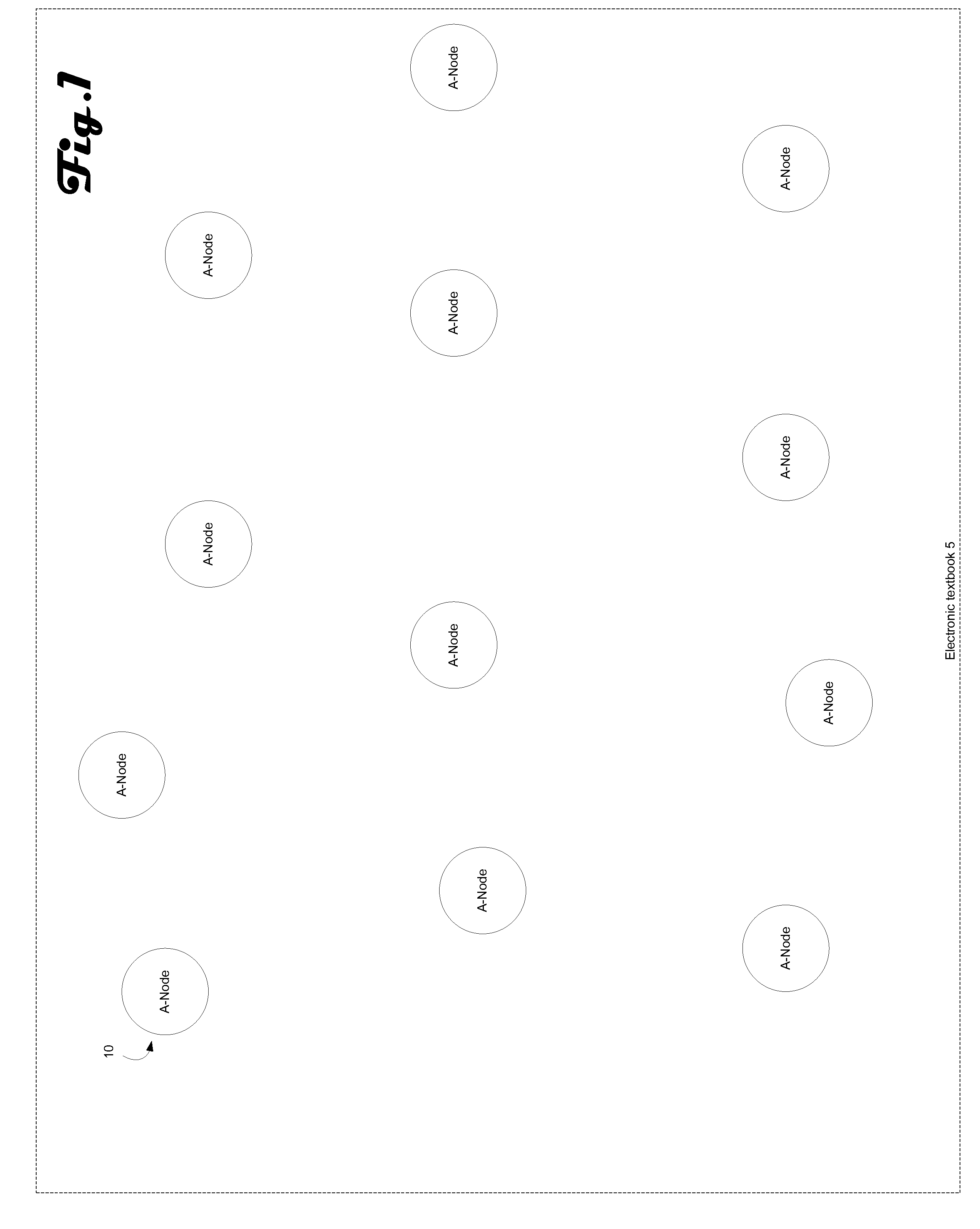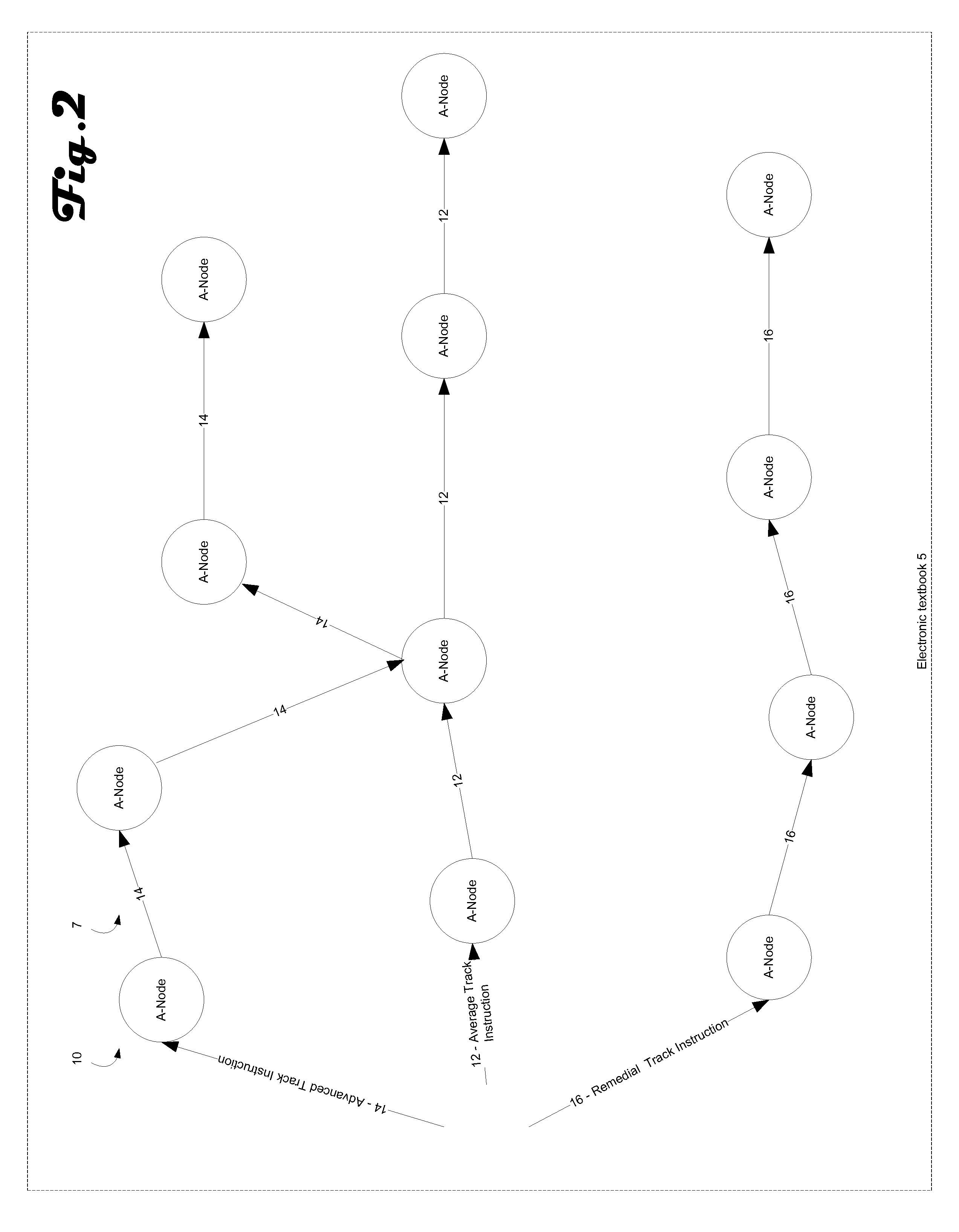This information is difficult to collect, organize, and present to users in a manner that is both focused and flexible.
However, a book is not flexible.
Furthermore, if a user wishes to explore content outside of the book, there is no easy way for the user to identify appropriate additional content to explore, with any
level of detail.
Also, the user has no easy way to
record that additional content for later consideration, either by her / himself or by others.
It is difficult for a user to locate useful related content, if that content is not directly linked to from the page the user is reading.
It is also difficult if not impossible for the user to
gain the benefit of the experiences of others who have navigated through the same collection of information.
At best, the user is presented with a page having links to other pages, but the user has no understanding of how other users have navigated through those links, why a particular user selected a particular link or path, or what path a particular user chose to follow through a collection of information.
It is also difficult for the user to make a
record of the user's own navigation through the content, and to present that
record to others.
It is also difficult if not impossible for a user to provide additional content and link that content to the visited content.
While users can create their own pages and provide links to the visited content, such links are only associated with the user's own page, and are not accessible from the visited content.
Consequently, although a group of web pages might well represent a useful collection of information, it is difficult for users of the web to individually or collectively shape such a collection into a coherent whole.
A traditional textbook cannot offer a multifaceted note-taking
system in which notes are directly associated with specific locations in the text, and yet also independently accessible and sharable.
Printed textbooks rely on the linear presentation of material, as set forth in the outline, and generally have difficulty presenting multiple parallel themes or discussing the interacting effects of
multiple factors.
The linear structure of both outline and material helps to maintain a single progression that aids our memory, but the linear structure does not always foster understanding and can subtract from understanding by de-emphasizing interrelationships among topics.
A printed textbook offers limited capabilities for students, teachers and others to share information.
The student usually reads the textbook independently, and there is no way for teacher, fellow students, parents or mentors to supplement the student's reading experience effectively with timely and focused encouragement, elaboration, supplementary exposition, cautions (mistakes to avoid) or emphasis (things to focus on).
Printed textbooks must be designed for a “typical student”, and cannot cater to the diverse needs of a varied student body.
Since it is ordinarily not practical for students in the same class to use different textbooks, a textbook designed for the typical student forces classes to focus on the typical student.
When major distinctions among students exist, the only practicable solution is clumsy and costly: different classes with different textbooks, such as special education with remedial textbooks, college-oriented classes with advanced textbooks, and special classes for students who speak a foreign language at home.
Diverse students would surely benefit from diverse materials to suit, but there is no practical way to assemble diverse material into a single book; printing costs would go up, books would get heavier, students and teachers alike would be confused, and there would be no way to administer personalized exams to reflect a student's unique status.
Our education
system shows clear signs of stress as a result: For example, the success of specialized schools catering to advanced students in some larger urban areas, in which the typical student is atypically advanced, strongly suggest that school systems that lack such facilities cannot now give their advanced students the full range of opportunities.
Our education
system also does not do well when educating students who have problems with standard textbooks due to issues like dyslexia or innumeracy, and yet possess ordinary or even superior intelligence.
Such students may be able to understand the meaning and function of language and mathematics just as well as typical students, but do not readily comprehend symbolic representations in letters and numbers.
Such teachings, oriented toward meaningful understanding, might also be useful supplements for all students, but they cannot now be readily assimilated into standard textbooks.
The root of the these difficulties lies in the limitations of the printed, one-book-suits-all textbook: there is a need for a new form of textbook that offers each student a
personalized learning opportunity embedded within a single overall consistent design.
Color-
blindness shows up another limitation: the colors used in diagrams and figures in printed books are designed for the student with typical vision, and cannot be personalized for each color-blind student to a palette that best conveys information to their
visual sensitivity.
Beyond these evident limitations, there is a wider issue that impacts every student: we are all different and it is not clear that we should be forced onto a single path by a typical-student text.
In addition to the above limitations, printed textbooks in higher education present problems in the areas of cost and
obsolescence, presenting complex knowledge in depth, linking up with other sources of information, fitting efficiently into a wider curriculum, and carrying knowledge forward after graduation:
The high pace of
obsolescence in textbooks forces down the value of used textbooks, thereby increasing
cost of ownership for students who resell, and calls into question the lasting value of books students purchase for their personal libraries.
However, there is no systematic means for rendering relationships between topics that
cut across different segments of the outline.
Nor is there any good way of highlighting the collective importance of relationships or themes that spread across different segments.
Nor is there any good way of navigating through the book to see only those sections that deal with a single theme in the proper order.
The tools presently available in a printed textbook to present complex material and promote understanding of complex matters are essentially limited to interpolated comments and diagrams, themselves trapped in the
linear sequence of the book and visible only at that one point.
Inefficient cross-referencing between textbooks is a major drain on a student's energy and understanding in higher education.
However, at present there is no way for the printed textbooks to interact in a single curriculum, nor any way for faculty to effectively offer detailed traversal paths that could substitute for interaction.
When reading a printed textbook, access to references is at best cumbersome.
This service cannot be provided without offering the student direct access to the cited references.
The educational styles normally supported by a collection of linear printed textbooks do not accord well with the comprehensive perspective required for mastery of a curriculum by students and faculty.
This is an awkward approach that is not fully satisfying for teacher or student, consumes valuable lecture time, and can create a sense of tension between lecture and textbook.
In our changing world adequate textbooks do not always exist, and when the teacher develops supplementary readings to fill the gaps or extend available coverage, it is often difficult to coordinate the new material with the existing curriculum.
A departmental faculty may work together to craft a consistent curriculum that integrates diverse textbooks and fills in the gaps, but there may be no efficient way to embody their efforts at the required
level of detail in a form of
documentation that can stand the test of time.
Difficulties in Carrying Knowledge Forward:
However, at present no efficient framework exists for the ongoing efforts of faculties in updating and expanding their
knowledge base and curricula to be usefully disseminated to their graduates.
As knowledge deepens, increasing specialization requires a proliferation of classes, which in turn leads to smaller class sizes and higher costs per student.
Linear thought does have limitations: It is easy to get caught up in a confined pattern of repetitive thought.
As our knowledge deepens and extends, we face increasing complexity.
Many of us are not always able to cope with the complexities that we face, and find it hard to keep up with the pace of change.
When we are engaged in creative thought and new ideas are emerging, it is often difficult to sustain the creative process at a high level because the flux of potential ideas cannot be retained in memory.
Existing knowledge, which we have held in memory in the past, is being questioned and disrupted during the creative process.
Unfolding ideas, which are often tentative and unstructured, are not yet fixed in memory and indeed should not be fixed, because they are subject to change.
Potential ideas that have not yet been articulated are the aim of the creative process, but those potential ideas have not taken shape in conscious thought.
Mental energy can be wasted in
confusion and creative opportunities can be missed.
The primary concern is losing touch with valuable ideas, losing track of the creative progress we have made, and ending the creative session without making any progress.
In an effort to protect ourselves from this, we may make a mental effort to hold on to our working ideas and tie them back to existing knowledge so that nothing will be lost; unfortunately, holding on mentally in this way can stifle the natural flow of creativity, slow our progress and tempt us to give up before we reach full potential.
We learn to think by solving problems, and as we mature we are able to solve more and more
complex problems, but we may not be learning creativity.
 Login to View More
Login to View More  Login to View More
Login to View More 


